TRILOGY BUILDING PART II: The Characters and Worlds of Star Wars and Halo
James Robert Martin returns for the second part in his guest blog series about the structure of a trilogy, using my Story Maps method to break down the Halo game universe and the classic Star Wars trilogy. [Part I here]
Trilogy Building: Story Mapping Star Wars and the Halo-verse
Part II: The Characters and Worlds of a Trilogy
by James Robert Martin
In any story, you have a hero and a villain. The farmboy from a remote planet discovering his destiny to confront the evil dark lord; the supersoldier saving humanity from an unknown alien threat; the diminutive yet stout-hearted adventurer confronting the mighty tyrant at the heart of his own lair. The central protagonist and antagonist anchor the tale, but within any truly POWERFUL Science Fiction or Fantasy story, a colorful supporting cast of characters populates each disparate world we discover on the course of the journey, resulting in battles of various size and scope. These characters and worlds can be broken down and categorized for ease of structural analysis.
THE CHARACTERS
The Hero
In the classic Star Wars trilogy (Episodes 4-6) , our Hero is the immature yet enthusiastic Luke Skywalker – a young man unfamiliar with his heritage, but who one day learns of his destiny to save the galaxy. In Halo, our hero is less reluctant or in the dark about his destiny, since he volunteered to become a supersoldier. Master Chief is the embodiment of action movie machismo, but nevertheless, comparable to Luke Skywalker in his role as protagonist and galactic savior.
The Overlord
The villains are slightly more nebulous. In Star Wars, Darth Vader appears as our primary villain. It’s not until the second entry in this trilogy that we realize Vader is really just the “Champion” for a bigger threat – the evil puppet master and a character type we refer to as “The Overlord,” Emperor Palpatine. In the Halo trilogy, our primary villains appear to be, collectively, an alien race known as The Covenant, the Overlords of which are the High Prophets of Truth and Regret. It’s not until the midpoint of Halo 2 (when both Master Chief and the Arbiter are falling to their death) we meet the true primary villain, Gravemind. At this point, Gravemind appears to be enlisting the help of both Chief and Arbiter to prevent the destruction of all life in the galaxy, essentially enemy and ally uniting toward a common purpose. It turns out later, however, that his ulterior purpose was twofold: by preventing the destruction of all life, he was ensuring the survival of the parasitic Flood to spread unchecked; also, by distracting Chief and Arbiter with stopping the Covenant, Gravemind was able to infest the ship In Amber Clad with The Flood in hopes of furthering its spread throughout the galaxy.
At this point, a case could even be made that The Flood is comparable as a physical counterpart to the Dark Side of the Force in Star Wars because, plainly put, it’s everywhere and can mess you up if you’re not careful. However, this might be better argued by someone like Jean-Paul Sartre, so we’ll save that for another article.
The Footsoldiers
As I mention the Flood, let’s take a look at another character type. On the side of our antagonists, we see a character called “The Footsoldier.” Whether this is indicative of the nature of evil to have others to do one’s bidding and complete the menial tasks like, oh, taking over a planet, or whether it is a natural feature of this type of story is hard to say. What is certain is that each saga, Star Wars and Halo, have their respective Footsoldiers. From Star Wars, we have the omnipresent Stormtroopers, spreading through the galaxy like a plague of oppression. In Halo, we have a similar plague, partially literal this time. Gravemind controls the Flood in his fight to spread the infection throughout the galaxy. At the same time, a secondary group of Footsoldiers – the Covenant’s Grunts and Elites – fight our heroes up to the start of the revolt, unwittingly aiding Gravemind in his efforts.
The Rogue
Any story has equally important characters that take a back seat in terms of their journey or individual development, but still have a major impact on the development of the storyline itself. Many Science Fiction stories use a character we will call “The Rogue,” which isn’t as straightforward as it sounds. I bet you expect the rogue to be Han, right? Well, much as he might fit that description, the actual “rogue” character type is somewhat different. A rogue changes direction with the wind, looking out for his own needs without heed to who else it might impact. Now, it could be said that Han starts out this way. He only agrees to help at the beginning of Episode IV because it is profitable for him, and he appears to be ready to leave as soon as the stakes get too high. He ultimately decides to stay around and help, though, not because of profit, but because it was the right thing to do, and he had come to view those Rebels as his friends. The true Rogue in the Star Wars universe, to me, is played by Boba Fett. Fett is a character who never looks to anything but his own benefit and profit. He is a bounty hunter, which fits the description of someone who follows the money, regardless of who is paying. During the course of the original trilogy, Fett only aligns himself with our antagonists because there was money in it and it was practical, but if the Rebellion had been paying Fett to hunt someone down, his allegiance would shift just that easily.
 “Dan has created a book that is straightforward and full of valuable insight and guidance for screenwriters at different experience levels.”
“Dan has created a book that is straightforward and full of valuable insight and guidance for screenwriters at different experience levels.”
-Laurie Lamson, Editor, Now Write! Screenwriting
Likewise, in the Halo trilogy we have a character whose motivations and affiliations are as nebulous as, well, a nebula. As solid as that little syllogism is, nevertheless, 343 Guilty Spark serves as our Rogue in Halo. Spark starts out as a caretaker of the Halo installation, enlisting the help of Chief to activate the installation to protect it from the Flood. When Chief and Cortana learn how that will end, Spark shifts into defense mode to stop Chief and Cortana from destroying the Halo. In this sense, Spark and Halo can be seen as permanently linked objects, because Spark’s purpose is protection of Halo and activating it when the need arises. So, as a Rogue does, Spark does whatever is necessary and follows whatever allegiance he needs in order to further his purpose. (Much like self-preservation of a bounty hunter, Spark’s goal is Halo-preservation.) Once his Halo is destroyed, he switches to the role of “Oracle,” a sort of library of information discovered by the Covenant. Absent his original Halo, he readily aligns with whoever best serves his purposes. In the case of Halo 2, his purpose is to get the next Halo (Installation 5) activated. When that, TOO, fails, Spark aligns with the Humans and Elites, by his own choice because he has no orders to follow after destruction of the installations. But upon discovering a new Halo being built at the Ark, protecting it again becomes his primary purpose.
The Wild Card
Another case of a character that enters at a later chapter in the trilogy is “The Wild Card.” I look at a Wild Card as any character who starts out with a singular purpose, then changes midstream based on outside pressure and, usually, self-examination. In the case of the Star Wars original trilogy, Lando Calrissian serves as our obvious Wild Card. He poses as a friend, but it turns out he is just luring our heroes in (It’s a trap!) with the purpose of turning them over to Darth Vader (who, it is worth noting, is blackmailing Lando into betraying his old friend Han Solo.) After considerable pressure from Leia and Chewie, he admits he was a jerk, even though the Empire was leaving him with little choice. Lando then essentially changes sides to help our heroes escape Imperial captivity and eventually rescue Luke (after his first battle with Vader) and Han (who has been taken away by Boba Fett.)
For Halo, our Wild Card character once again does not show up until the second act of the trilogy, Halo 2. The Wild Card is The Arbiter, a Covenant Elite upon whom a ceremonial title has been bestowed, and who has been enlisted to fight to the death for the Covenant in order to save his reputation. However, against all odds he survives the suicide missions assigned by the Covenant hierarchy and learns of the Prophets’ intentions to ignite the Halos and destroy all life. Arbiter joins forces with humanity and our protagonists to thwart the hierarchy’s murderous plans and exact revenge for the Prophets’ betrayal of the Covenant.
The Powerful Ally and Champion
The Champion always takes on an active role in the completion of his or her goals, which are usually in support of another character. There is an analogue to this character on the side of both the Heroes and Villains. For our protagonists, we will refer to the “Powerful Ally,” and for our antagonists, we have simply a “Champion,” one in support of either side. I guess there always has to be someone to do the dirty work.
In Halo, our Powerful Ally is almost certainly Sgt. Johnson. He is the embodiment of “tough guy,” rallying the troops when necessary, shaking off injury, and always ready to take it to the enemy. He even helps to take out his counterpart, the evil Champion, Tartarus, Chieftain of the Brutes. Tartarus is loyal to a fault, never questioning his orders from the High Prophets, even when he is confronted with the fact that the Prophets’ ultimate goal is self-destruction (along with all other life in the galaxy.) He even nearly succeeds in completion of his orders when he activates the Delta Halo, but is killed by Johnson and the Arbiter in time to shut down the firing.
In Star Wars, we have the same duality – on the Rebel side, I would venture to say that the “Powerful Ally” duties are shared by Han Solo and Chewbacca, equally. When Han is entombed in carbonite in Episode V, Chewbacca capably steps into his role. And who can argue against Han perfectly fitting the description of a devil-may-care, sometimes careless, always fearless fighter who stops at nothing to help his friends achieve their heroic goals? Our villains’ Champion is something of a surprise. In this trilogy, none other than Darth Vader serves as the Champion. This is because he actually serves at the hand of the Emperor, carrying out his wishes in attempting to secure Imperial victory over the Rebel Alliance, even to the point of attempting to turn his own son to the Dark Side.
The Princess
Only a couple of character types left, but you can be sure these last two are seen in some form in any film, game, novel, or trilogy thereof. First, let’s talk about the “Princess.” In every tale, there is usually a female character which serves as a driving force in the story. A character which serves sometimes as a damsel in distress, occasionally as a Femme Fatale, but always as an active force in the story. It isn’t uncommon to see the Princess play a variety of roles in a story. This wealth of roles in the Star Wars original trilogy is played by Princess Leia Organa. This character starts out as a stereotypical damsel in distress, needing rescue by our hero and his cohorts. It actually ends up being Leia who pulls the group’s irons out of the fire, by switching roles and helping in the escape. Throughout the entire trilogy, Leia is there driving the story forward – as a love interest, a leader of the Rebels, a diplomat, and a citizen seeking justice for the destruction of her homeworld. Less clearly, for the Halo trilogy, the Princess appears to be personified by Commander Keyes. Most people would think of Cortana in this role, but Cortana actually fits the description of a very different character we will discuss at the end. Keyes serves as Commander of the ship In Amber Clad and drives our story forward in many different ways. She plays a pivotal role in fighting toe to toe with the Covenant, assisting chief during his battle against the Prophets, and protecting Earth from the activation of the Ark. She also attempts a rescue of Sgt. Johnson in Halo 3, but is killed in the process.
The Wizard
Our final character at which I would like to take a look is what we call “The Wizard.” The Wizard employs seemingly magical abilities to enlighten and aid our Hero, and to guide him or her along their path to success against near-insurmountable odds.
In Star Wars, our Wizard is obviously Obi-Wan Kenobi. He enlightens Luke as to his true destiny, spurs him into action, and molds and informs him during the course of his journey. He offers opportunities for Luke to grow at different stages of his maturity and training, and plays the role of rescuer on more than one occasion. He even sacrifices himself early on, both to serve as a distraction during an escape, and also to become more powerful in his assistance of Luke.
Halo is no different, but our Wizard is less obtrusive in the form of Cortana. I can see how this might be a point of some contention for some of our readers, but let me explain. Cortana may be a being borne of technology, but doesn’t she exhibit the same extraordinary capabilities to aid Chief along the way, like detecting and transmitting radio signals, deciphering codes, opening locks, etc.? World-renowned author Arthur C. Clarke’s 3rd Law of Prediction states that “Any sufficiently advanced technology is indistinguishable from magic.” For the purposes of our analysis, Cortana perfectly fills the bill of “Wizard.”
Aside from the literal definition of wizardry, in the spirit of the character, she guides Chief both literally and figuratively along the way. As an artificial intelligence capable of instantly accessing things like radar and networks, she provides a level of “omniscience” to Chief that he would not otherwise be able to achieve. She provides guidance during his journey, and serves as much as a tool in battle as another soldier. She even has the same opportunity to serve as a sacrifice when she volunteers to stay behind on High Charity while Chief pursues the Prophets, which ultimately leads to her capture by Gravemind.
The Old Guard
It’s interesting to note that every character has a history, and our Wizards do as well. If we look deeply enough, we see that Obi-Wan had his own guide and mentor in Yoda, and Cortana had a sort of metaphorical “guide” in that her AI and biotic structure was based on her developer, Dr. Catherine Halsey. These characters can be added to a collective group of “those who came before,” which we refer to as The Old Guard.
THE WORLDS AND THEIR BATTLES
Of course, no discussion of characters would be complete without discussing the trials they face on their journeys. In the third part of this blog series, we’ll discuss the actual plot beats of the narratives, but first, let’s talk about where these events take place. Every hero’s journey takes them through fantastic locations we call “The Worlds” of a trilogy saga.
Most of the worlds in a trilogy can be classified as Home Worlds, Waypoint Worlds or Battle Worlds. Some can have more than one categorization: e.g., the planet Hoth is a Home World (albeit temporarily) that becomes a Battle World. In Star Wars: Episode IV: A New Hope, the first Death Star is a Waypoint World in that it is a stop along the way for the crew of The Millennium Falcon, but it becomes a Battle World for the climactic trench run sequence seen in the final act. It may help you to chart out the worlds in your saga using these three meta-categories. We won’t bother to list every world in our two sample universes, but rather let’s discuss the major external conflicts that occur in these locations, what in movie parlance are often referred to as “set pieces.”
We have found each installment of a trilogy has a similar flow to its internal and external battles, thus it helps to classify a battle as “small” or “big.”
For Star Wars, the initial small battle takes place on none other than Tatooine, where Luke’s Personal battle takes him through learning about his destiny and deciding whether to leave the only planet he’s ever known, or remain in the safety of his home. After learning that the Empire has killed his Aunt and Uncle searching for their newly acquired droids, Luke decides to leave and join the Rebellion.
For the Halo saga, we begin with our main characters on the ship Pillar of Autumn attempting to prevent the Covenant from learning of Earth. At this point, our characters don’t know that the fate of the galaxy will soon hang in the balance, so, while it seems like quite a big battle for them, the safety of one planet is a decidedly small battle when compared to the safety of the entire galaxy. As such, our first battle is personal to humanity and protecting the human homeworld.
As we progress to the end of the first episode in our saga, the battles become decidedly larger, increasing in conjunction with the stakes. This serves a twofold purpose – it ends Act I of our trilogy with a bang, and a glorious success for our protagonists, encouraging them to continue on their journey. However, it also sets the stage for Act II of the trilogy, in which our antagonists are sure to strike back.
For the Star Wars saga, our first BIG battle takes place at the first Death Star in space around the Rebels’ secret base on Yavin IV. On the surface, the Rebels have won, and all is celebration. On further examination, we remember that Darth Vader was never really killed, his ship was just knocked out of control. Also, the Empire is huge, surely they won’t be thwarted by a single loss? The stage is now set for Act II in the saga.
Similarly, for the Halo saga, our first episode plays out with an enormous space battle at the first ring, the titular Halo superweapon and space station. This saga’s first installment ends with a good deal more foreshadowing as to the next episode in the story. We aren’t entirely sure where the threat will move next, but we’re left with little question as to whether or not there WILL be a part two. This may be due to the inherent prescience of game developers (please read the previous sarcastically) but is more likely because the film industry is so much more unpredictable that the first episode of a film needs to end with more “finality,” so if a part 2 and 3 are never ordered, the movie can stand alone on its own merits.
But once that second episode kicks off, wow, does it kick off with a bang. For both of our stories, we begin with a massive battle at a home-type world. In The Empire Strikes Back, the new Rebel base on Hoth is attacked by the Empire. The Rebels are left with no choiec but to abandon their base. Meanwhile, Luke continues his personal journey by flying to meet Yoda on Dagobah.
For Halo 2, we begin with our Heroes on Earth receiving medals for their achievements at the first Halo, but this is quickly forgotten as an entire fleet of Covenant ships arrives to begin an invasion. Whereas protecting Earth was a personal matter in the last episode, now the battle is actually taking place at Earth, and the stakes are much higher, putting this firmly in the category of a BIG battle.
Our scale returns to the personal as we finish this Pillar of our trilogies. Luke leaves his training early to protect his newly-captured friends at Cloud City, and the impact of his personal battle deepens as he faces off against Darth Vader, the Emperor’s Champion, who reveals himself to be Luke’s father. This battle fits the description of small in two ways – first, the impact is very internal on Luke’s journey through the saga, affecting really only himself and his friends. Second, the battle itself is confined to a small area of Cloud City as Luke attempts to rescue them.
Halo’s final battle starts out seeming like a large battle, but what is at stake is far more personal to Master Chief – after preventing the activation of yet another Halo, Chief must leave for an endangered Earth to help stop its destruction. In the process, he is forced to leave Cortana behind on High Charity, having no time to rescue her. So while the larger-scale stakes are high, Chief’s battle is even more difficult, because he will need to rescue Cortana somewhere along the way.
For our final Pillar, we begin with a similarly personal struggle, and for similar reasons. Luke and company are covertly attempting a rescue of the only ally who didn’t escape the battle in Cloud City, Han Solo, who was taken by Boba Fett to Jabba on Tatooine. The battle never expands beyond the sail barge and skiff over the Sarlacc. Winning this battle sets the stage for the final battle of the saga, which takes place at the second Death Star over Endor. This final battle is the culmination of all conflict, and the resolution of all plots throughout the saga – Han and Leia’s relationship is finally clarified between them, the galaxy is safe from the oppression of the Empire and Death Star, and Luke completes his arc when he resists the Dark Side and convinces his father to destroy Emperor Palpatine (thus realizing the prophecy that Anakin Skywalker will bring balance to The Force).
Finally, the last installment of the Halo trilogy begins with another massive battle to protect the galaxy: Chief and company fight again on Earth, but this time fight to prevent the activation of an artifact which will provide a direct portal to The Ark — the control device which will allow all Halos to be fired simultaneously. This battle has a very personal side to it, because Chief has arrived without Cortana, and that goal is always at the back of his mind. By protecting Earth, they are simultaneously protecting the galaxy, because activation of the Ark will destroy not only Earth, but all life in the galaxy. They fail to prevent the activation of the Portal, and so their final goal is to destroy the Ark at all costs. These early battles are intensely personal because they involve sacrifice — part of Earth is destroyed in preventing the parasitic flood from infecting the planet, and Chief and Arbiter are forced into a truce with Gravemind to stop the Prophet of Truth, which leads to betrayal. In the final battle, we are once again on a Halo, this one in the process of being constructed by The Ark. For once, our Heroes decide that activating this particular Halo isn’t a bad thing, because it will prevent it from firing correctly. That is accomplished in our final battle. The larger galaxy is saved, but the portal through which our allies escaped collapses on the ship Forward Unto Dawn, carrying Chief and Cortana. While it appears to be destroyed, they in fact survive, and much like the first Halo heavily hinted at a second, the end of this Halo closes the trilogy nicely, but hints strongly at the recently-released Halo 4.
Every great Science Fiction or Fantasy trilogy has some component of these characters, battles, and worlds. By crafting a trilogy with these elements in play, your story will benefit from a classic, rock-solid structure that sparks immediate identification by worldwide audiences. In our final article, we’ll take a look at the signpost beats and act breaks that make up the plot progression of a trilogy and each of its chapters.
Continue on to PART III: THE SAGA!
Punching out,
James Martin
thisspacereserved.blogspot.com
@jaymo1978
 “…as much as an analysis of Nolan the filmmaker as it is an analysis of story structure within his films.”
“…as much as an analysis of Nolan the filmmaker as it is an analysis of story structure within his films.”
-Script Magazine

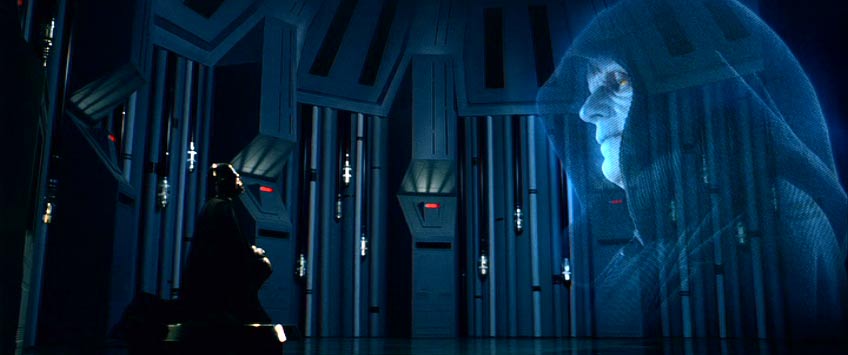
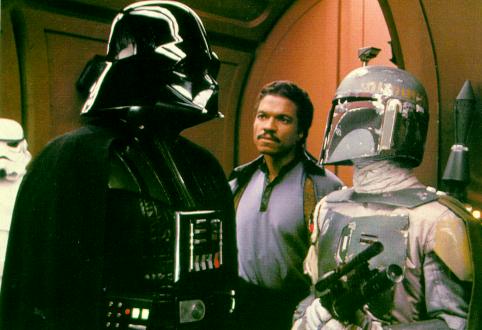
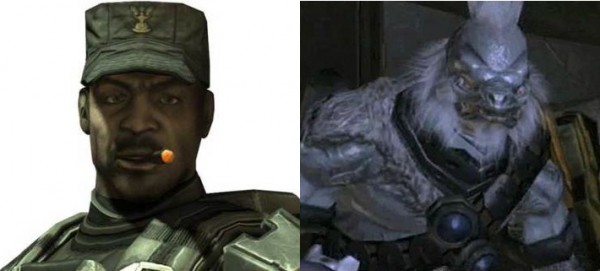
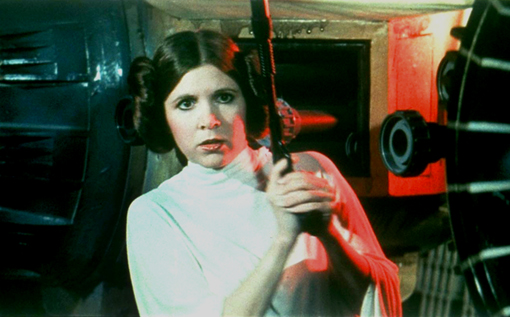

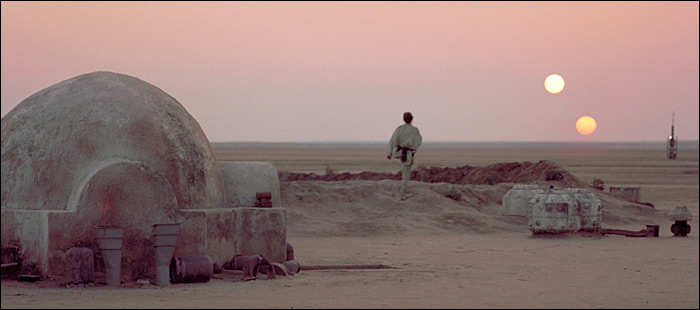

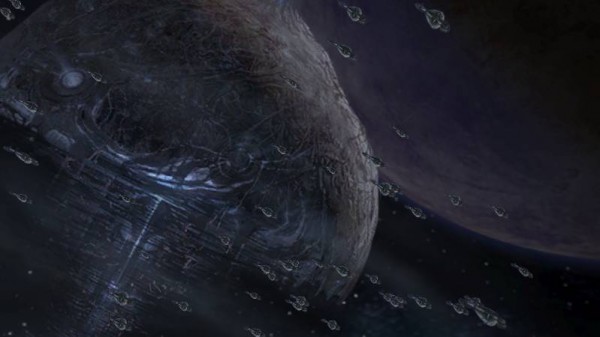
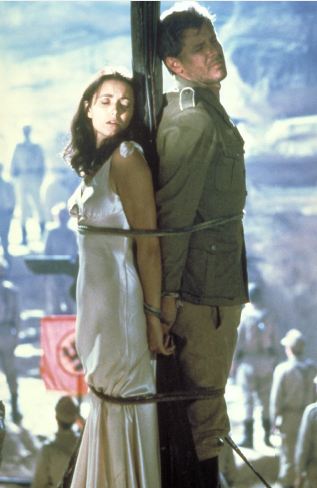
Leave a Reply
Want to join the discussion?Feel free to contribute!